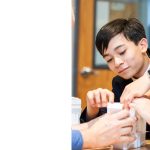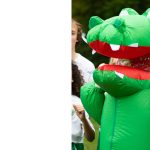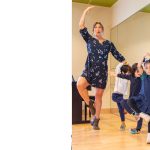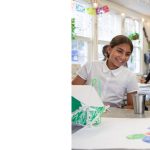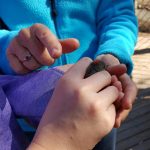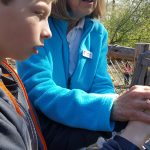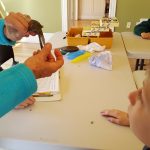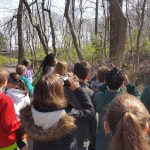Bird Banding at the Birdcraft Museum
Posted by Mary FaulknerIt was one of the first beautiful days of spring and a wonderful time for the fifth grade students’ field experience to the Birdcraft Museum in Fairfield. Each year prior to this experience, I tell the students we are going to see how birds are banded and find out the many reasons why birds are banded in the first place. And each year this announcement is met with little enthusiasm, not knowing what to expect, but as is usually the case, this changed very quickly when we arrived at the center. The volunteer banders explained that this is usually a very busy time of year for them, but with the long months of winter temperatures and the slow onset of warm spring weather, the birds were slow in returning this year. However, as luck would have it, when the banders returned from checking the nets in the sanctuary, they returned with birds! The students had the opportunity to observe two different bird species being banded; the more common white throated sparrow and the shy and somewhat elusive yellow rumped warbler! The creatures were banded, weighed and checked to see how old they might be, among other things. They had so many questions and answered just as many! After we watched these birds banded and released by students, we walked through the center making observations using binoculars, of other birds and reptiles. We also were shown the nets that are hung between trees where the birds are caught for banding. During our short hike we observed turtles, a pair of mallards and several red winged blackbirds. The class also observed two downy woodpeckers hopping around in the trees. It was a great day and a wonderful opportunity for the students to get an up close view of these creatures!
← Catching the Wind Affliction, the Bible, and Empirical Evidence: 17th Century Witchcraft Debate →




